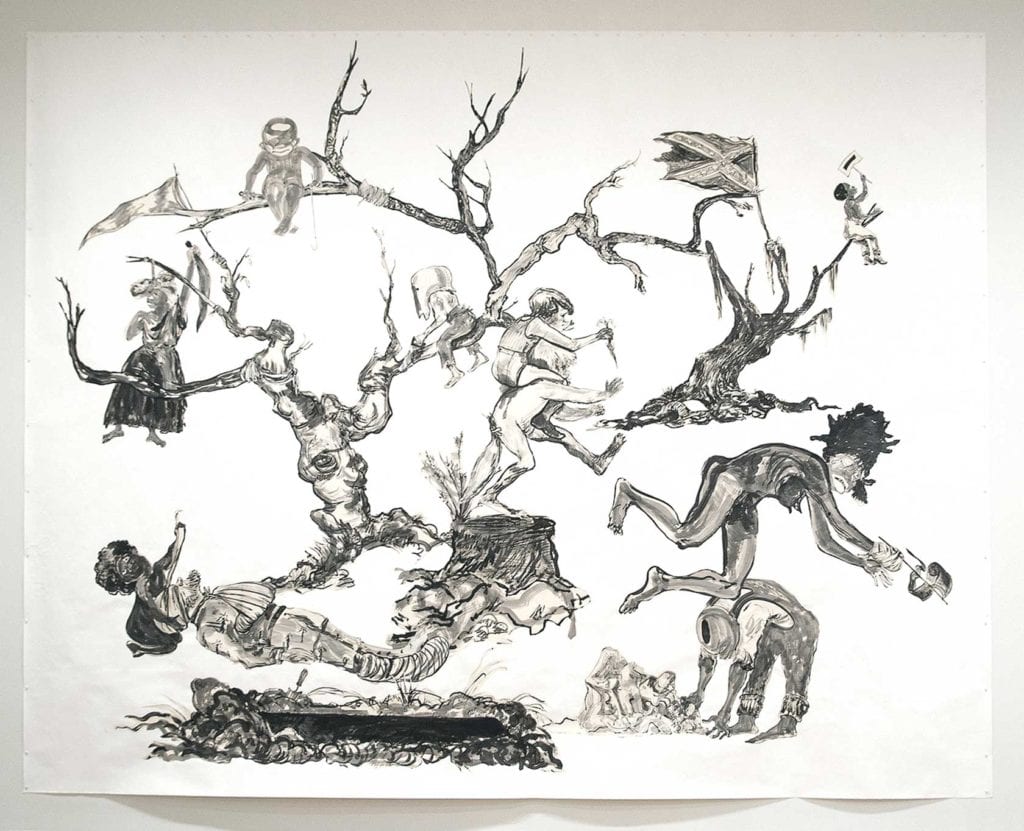Monumental Kara Walker acquisition on display at Harvard Art Museums

In 2017, the Harvard Art Museums acquired Kara Walker’s seminal work, “U.S.A. Idioms.” Now, the 12-foot drawing is on display for the first time since its purchase. Walker created the drawing in 2017 as a reaction to the white supremacy rallies in Charlottesville, Virginia. “U.S.A. Idioms” is on view through October but will be kept in storage for several years following the exhibition to protect it from the effects of light.
Mary Schneider Enriquez, Houghton associate curator of modern and contemporary art at Harvard Art Museums, says she was instantly attracted to the piece when she saw it at a gallery in New York. “Like all her work, rather than specifically mapping out the characters, she leaves an ambiguous space,” says Enriquez. “It’s the language of the recognizable without the specificity. She draws you in to the story she tells without telling you how to read it.”
Like many of Walker’s most famous works, “U.S.A. Idioms” features a cast of archetypal African American characters and their oppressors. The sheer scale of this work is astounding. Though Walker has worked in large-scale format before, particularly with silhouettes, this piece is Sumi ink and graphite drawings on cut newsprint, gessoed collage-style onto paper. This allows viewers to sit up-close and personal with the details of Walker, the knots on the trees that resemble mangled body parts, the rough earth in an open grave, the woven bandages around a white soldier speculated to be Jefferson Davis.
“As we live in this really fraught moment in our country, I feel strongly that we need to learn from our past now more than ever. The legacy of slavery is something we have to learn from,” says Enriquez.
To provide context about Walker’s practice, three other of the artist’s works from Harvard’s collection are displayed with “U.S.A. Idioms.” They range from an example of her classic silhouetted style (“Freedom: A Fable”) to an aquatint etching that reveals increasingly grotesque themes the longer it’s examined (“Li’l Patch of Woods”). These supporting pieces will be refreshed with new works in June.
“U.S.A. Idioms” is not for the faint of heart. But neither is the racial reality of the contemporary world. Enriquez says it is more important than ever to pay attention to art that challenges us. “[Walker] forces us to see things unflinchingly. Her work is really difficult, and it should be,” she says. “It seemed just right for us in that it felt like a complete story was being told.”




![Banner [Virtual] Art Gallery](https://baystatebanner.com/wp-content/uploads/2024/04/NJ-H_1-713x848.jpg)

